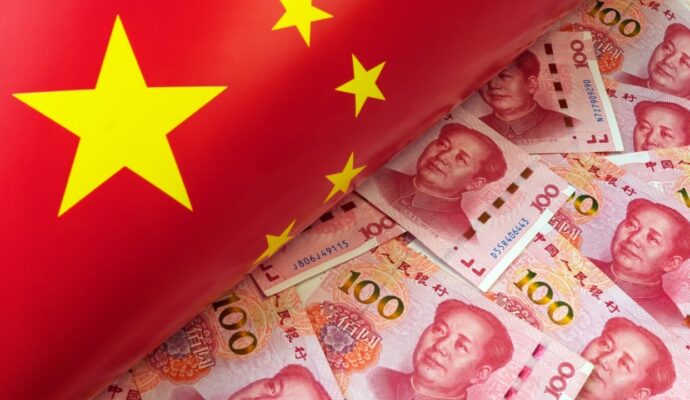
Analysts at HSBC said the official manufacturing PMI was dragged down by a deeper contraction in new export orders, though they said business expectations improved again.
The headline reading rose and is consistent with factory activity remaining largely unchanged last month
Looking at the average across both PMIs, the headline reading rose last month and was consistent with factory activity remaining largely unchanged in November, said analysts at Capital Economics.
2. Services PMIs edge up on average, but remain below 2019
China’s official non-manufacturing PMI stood at 50.2 in November, compared with 50.6 in October.
Within the official non-manufacturing PMI, the construction subindex stood at 55, up from 53.5 in October.
“Services activity contracted for the first time since last year, weighed on by the property sector, but construction activity revived on more policy support,” HSBC analysts said.
As ‘market continues to heal’, China’s services activity expands to 3-month high
As ‘market continues to heal’, China’s services activity expands to 3-month high
“The China Caixin Services PMI showed an acceleration in business activity as the index rose to 51.5, while business expectations also picked up,” the HSBC analysts added.
“The better Caixin data contrasts with the contraction in the [official] print, likely reflective of stronger small and medium-sized enterprise activity versus weak property activity in the latter.”
Analysts at Capital Economics said that, taken together, the average of the two services PMIs edged up slightly from 50.3 to 50.4, but remained below the 2019 average of 52.8.
3. Composite average PMI rises for first time in seven months
China’s official composite PMI, which includes both manufacturing and services, fell to 50.4, down from 50.7 in October.
Caixin/S&P’s composite PMI, meanwhile, grew to 51.6 from 50 in October, marking the strongest reading since August.
Property, demand weigh heavy as factory, services dent China’s recovery efforts
Property, demand weigh heavy as factory, services dent China’s recovery efforts
“The average of the official and Caixin composite PMIs rose for the first time in seven months to 51. But it is still well below pre-pandemic levels as the average in 2019 was 52.5,” said analysts at Capital Economics.
“There were also some signs of downward inflationary pressures last month.”
4. Just enough to keep the recovery alive?
Analysts at Capital Economics said the PMI surveys suggested that the economy made some headway in November, but they still pointed to a sharp loss of momentum in recent months.
“The PMIs disappointed again and, taken at face value, suggest that the economy stagnated in November,” they said.
They expect policy support to remain a tailwind, with property-easing measures continuing to be refined and special bond quotas set to be distributed by the end of December, while a resumption of rate cuts is seen as likely, as pressure on the yuan eases.
For economy to flourish, China must ‘spell out, ram home’ private sector’s role
For economy to flourish, China must ‘spell out, ram home’ private sector’s role
“Our sense is that this will be just enough to keep the recovery alive, underpinning a modest pickup in growth into the first half of next year,” they added. “But the weak PMIs are clearly a challenge to that view.”
Weak links from the property sector and exports remain a drag on China’s economy, said the HSBC analysts, with firmer activity seen in areas such as consumption and industrial production.
“Policymakers will need to continue to ramp up support to help sustain the growth momentum,” they said.

